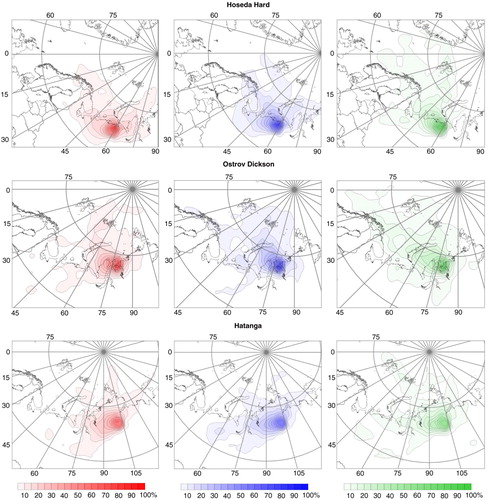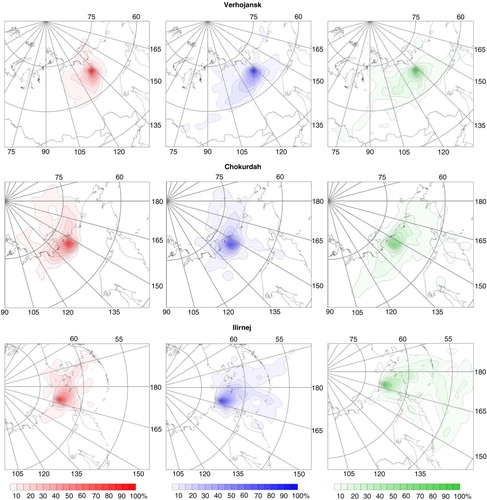Figures & data
Table 1 Descriptive statistics of snowfall at selected stations across the Russian Arctic () during the period 1950/51–2012/13.
Fig. 2 (a) Seasonal evolution of daily mean snow depth (cm) at selected stations. (b) Monthly mean snow accumulation (blue) and ablation (red), in cm for the same stations (averages for period 1950/51–2012/13).
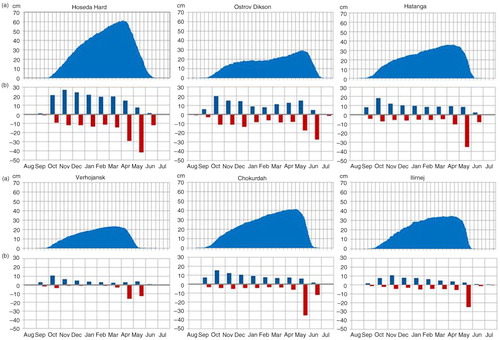
Fig. 3 Mean SLP (hPa) over the Northern Hemisphere during the cold season (October–May) during the period 1950/51–2012/13.
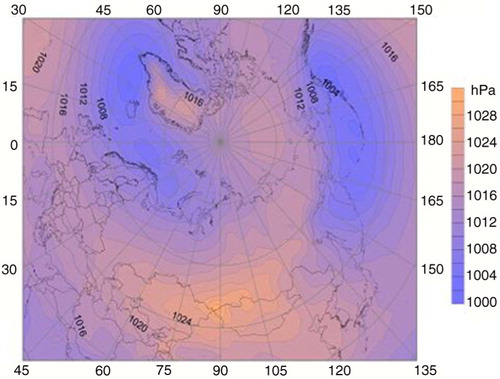
Fig. 4 SLP anomalies for (a) five days prior to and (b) during days of intense snowfall at selected stations.
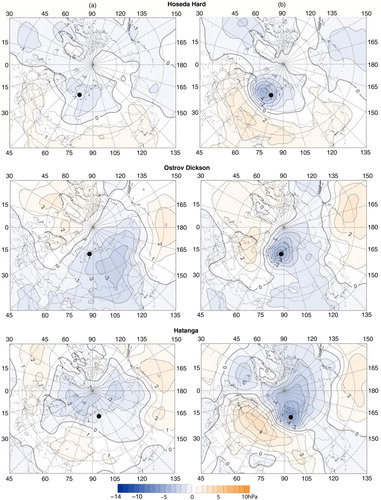
Fig. 5 SLP anomalies for (a) five days prior to and (b) during days of intense snowfall at selected stations.
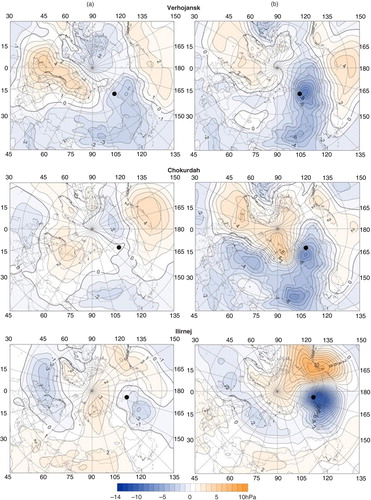
Fig. 6 Spatial distribution of 72-hour backward trajectory end point frequencies for three atmospheric levels: 500 m (red), 2000 m (blue) and 5000 m (green). Based on 72-hour backward air trajectories produced with the HYSPLIT model for the 75 heaviest snowfall days at each station.
